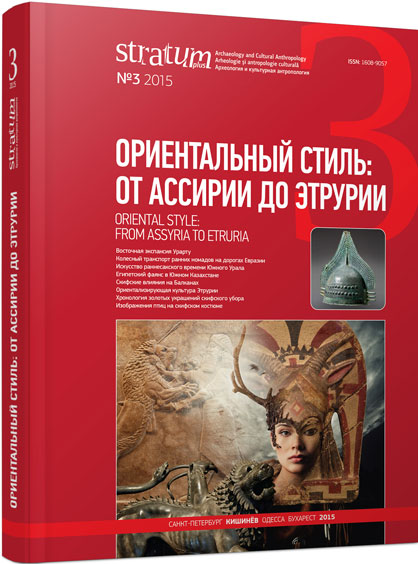Не все амфоры с энглифическими клеймами принадлежат Гераклее Понтийской
Not Every Amphora with Englific Stamps Belongs to Heraclea Pontica
Author(s): Vladimir I. KacSubject(s): History, Archaeology, Economic history, Ancient World
Published by: Издательский дом Stratum, Университет «Высшая антропологическая школа»
Keywords: Heraclea Pontica; “pseudo-Heraclean” amphorae; englific amphorae stamps
Summary/Abstract: In recent years, one of the favorite S. Monakhov’s aphorisms was the following: not every amphora with englyphic stamps belongs to the workshops of the Heraclea Pontica. This statement can hardly be disputed, since besides Heraclea, there are reliably known englyphic stamps of other centers which practiced marking of their ceramic wares.However, what cannot be accepted, it his attempt to attribute certain groups of amphorae, traditionally attributed to Heraclea, to some other South Pontic centers. Remarkably, this attempt at the moment finds supporters and followers (G. Lomtadze, O. Gabelko and E. Kuznetsova).S. Monakhov’s identification of “pseudo-Heraclean” amphorae is not undisputable. On the one hand, the researcher has convincingly shown that these amphorae in their morphological features are close to the separate types of Sinopa ceramic wares. On the other hand, his statement that their englyphic stamps do not correspond to the Heraclean tradition of marking contradicts the reality. All indicated stamps find analogies among typical Heraclean stamps, and the magistrates mentioned in them fit well into the overall list of the Heraclean officials who controlled the ceramic production. In this connection, the main conclusion that these vessels were produced outside Heraclea cannot be firmly substantiated.
Journal: Stratum plus. Археология и культурная антропология
- Issue Year: 2015
- Issue No: 3
- Page Range: 337-346
- Page Count: 10
- Language: Russian
- Content File-PDF

